Research News
May 3, 2016
USU Soil Scientist Discusses New Device To Assess Snowmelt
iUTAH researcher Scott Jones, a soil scientist from the department of plants, soils and climate at Utah State University was interviewed by KUSU reporter Katie Peikes about a new device to aid in predicting the state’s water supply. Jones explains the probe’s function saying it “fires a heat pulse for eight seconds and then you measure the temperature near the needle for another two minutes,” adding that “we have a model that describes this heating in the soil and you fit the model to those temperature rise measurements. The parameters that are fitted are basically describing the thermal conductivity and the thermal diffusivity of the soil.”
"We’re interested in soil moisture in the mountains because one of the aspects of the soil and the vegetation on the surface is that it forms the bottom boundary for all of the weather and climate interactions, and so understanding that boundary becomes quite important for getting better estimates of climate change and weather," Jones said.
Press: KUSU Radio

April 18, 2016
Week-long Celebration of USU's Research Excellence

Utah State University Research Week 2016 featured iUTAH researchers and graduate students Kshitij Parajuli, Elizabeth Ogata, and Enjie Li. Talks and poster presentations by USU undergraduates and former iUTAH iFellows include Viviane Baji, Matthew Barnett, Jesse Fleri, and Josh Gathro. The Office of Research and Graduate Studies hosts a series of events annually in April, showcasing exceptional research and researchers at USU.
The final event on the Research Week calendar, Ignite USU, is an atypical lecture series where nine graduate and undergraduate students, “enlighten us, but make it quick.” Students share the stories behind their research and what drives their success in five minute talks with presentation slides advancing every 15 seconds. Enjie Li, doctoral student in the Department of Environment & Society, opened the Ignite USU series with her talk “Happy Baby, Frustrated Collaborator.”
Press: Utah State Today | USU Statesman | The Herald Journal
April 12, 2016
How climate change dries up mountain streams
University of Utah and iUTAH researcher Paul Brooks was recently featured in the news. Here’s an excerpt from the EurekaAlert article:
The western United States relies on mountain snow for its water supply. Water stored as snow in the mountains during winter replenishes groundwater and drives river runoff in spring, filling reservoirs for use later in summer. But how could a warming globe and a changing climate interrupt this process?
In a new study in Environmental Research Letters, a team of hydrologists that includes University of Utah professor Paul Brooks answers that question by simulating isolated climate change effects on Rocky Mountain stream systems, varying the type of precipitation (rain vs. snow) and the amount of energy (temperature) in the system. The answer, they found, depends less on how water enters the stream watershed, and more on how it leaves.
Press: UU News | EurekaAlert | KSL Radio | KUER Radio | ABC4 Utah | Deseret News | Science Daily | KULR TV | KTMF/KWYB
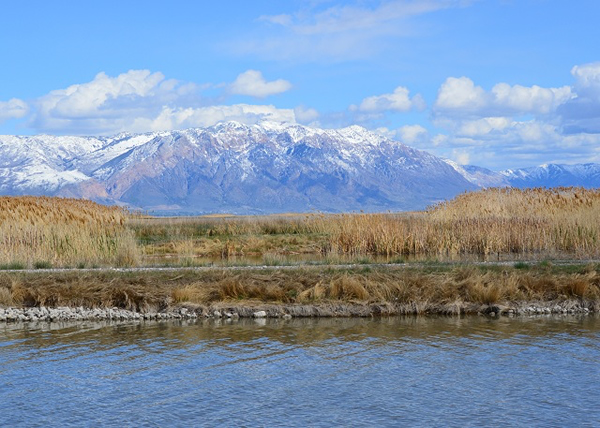
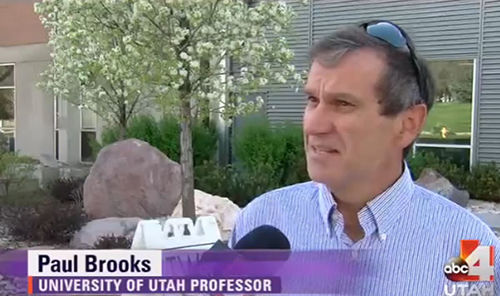
April 11, 2016
Transdisciplinary Research Calls
Melissa Haeffner talks about how her collaborations with iUTAH led to her interest in a transdisciplinary approach to research in the Utah State University Spring 2016 alumni magazine. As an iUTAH collaborator, she is part of a multi-institutional, interdisciplinary team of scientists exploring population growth, climate change and land use are affecting Utah’s water resources. This December, she will be one of 78 women participating in a 20-day women-in-science leadership trip to Antarctica.
“I really do believe that if we’re going to be talking about climate change, if we’re going to be talking about natural resources, we can’t just study ice and water and air and carbon,” says Haeffner. “The reason why these are problems is because they are problems for humans, problems for our human survival. They are anthropogenic problems, because of our impacts on the earth. And so to study these things without social sciences, I think, is just setting ourselves up for failure. It’s too big, too important a piece to miss.”
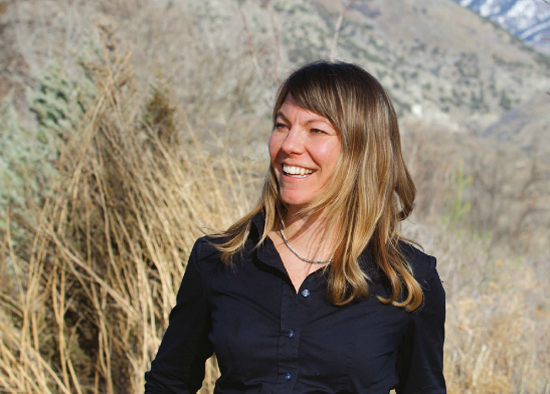
Credit Donna Barry, University photographer.
April 6, 2016
iUTAH and USU researchers Doug Jackson-Smith, Courtney Flint, and Andrea Armstrong were featured in Liberalis, the alumni magazine of the College of Humanities and Social Sciences at Utah State University. “Aggregating the Puzzle,” explores the social science research connected with the iUTAH project. Here is a sampling of quotes from the article:
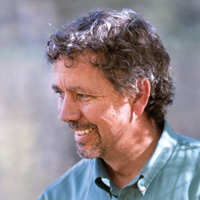
"I am just really interested in aggregating the puzzle and getting a clear-eyed vision about how we are changing as a society," Jackson-Smith says. "How is our built environment changing and how that is going to play into how this transition unfolds? I don't hear a lot of decision makers and public discussion around those issues of differentiating urban growth."
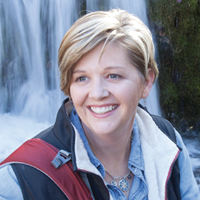
"Utah State is a land grant university. We can help with this," Flint says from her desk in Old Main. "Our mission really is not just to send information out to the public, but to be mindful of what the needs are to the state. How do we know if we don't ask?"
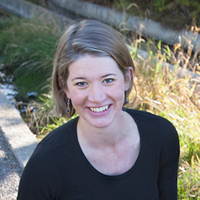
“A lot of research on Western water has taken the very large-scale perspective … and those tend to involve state and federal agencies,” Armstrong says. “They make big dams, big infrastructure, and while those types of policies and programs do set the stage in which local water decisions are made, the day to day activities of water management occur in our city and local irrigation organizations.”
In closing, Armstrong says “The other great part about our water system is that we built it. We do have some control over water once it’s here and we can design a system to meet our future needs. The complicated part is deciding what those needs are and striking a balance between natural and human uses. So if we can come up with a plan, and if we can try to foresee some unintended consequences of water changes, then I am confident that things will be okay. Humans have the ability to adapt. We always have.”


